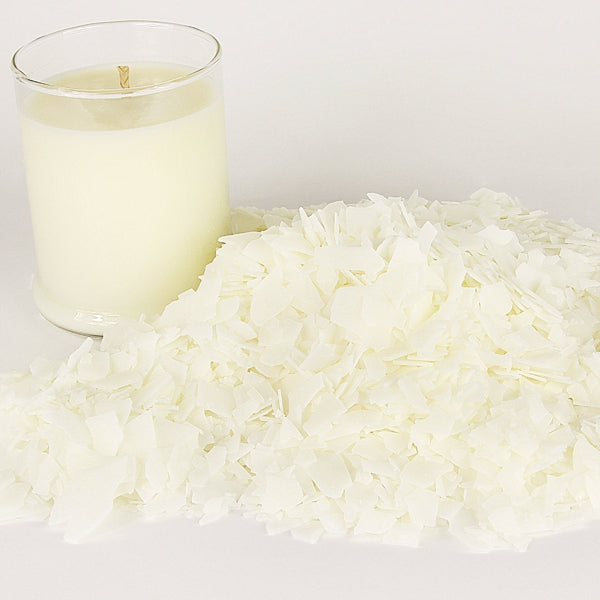Discover the World of Crystal Soy Candles and Home Fragrance Delights
Discover the World of Crystal Soy Candles and Home Fragrance Delights
Blog Article
From Wick to Wax: Recognizing the Chemistry Behind Soy Wax Candles and Their Ecological Impact
As we brighten our spaces with the warm radiance of candle lights, there exists a realm of intricate chemistry behind the apparently easy act of lighting a soy wax candle light. Join us as we decipher the clinical complexities behind soy wax candle lights and discover their effects on our atmosphere.
Soy Wax Vs. Paraffin Wax
When contrasting soy wax and paraffin wax for candle making, it is crucial to comprehend the distinct qualities and benefits of each product. Soy wax is an all-natural, renewable resource originated from soybean oil, making it environment-friendly and eco-friendly - candles. On the other hand, paraffin wax is a result of oil refining, which elevates problems about its environmental influence and sustainability
Soy wax candle lights melt cleaner and emit less soot compared to paraffin wax candles, making them a healthier choice for interior air high quality. Furthermore, soy wax has a reduced melting point, permitting for a longer-lasting candle light that spreads scent better. Paraffin wax, on the other hand, tends to melt faster and less cleanly, possibly launching harmful chemicals right into the air.
From a sustainability viewpoint, soy wax is preferred for its biodegradability and renewable sourcing, lining up with the growing consumer choice for eco mindful products. While paraffin wax has been a conventional selection in candle light making because of its affordability and ease of use, the shift in the direction of green choices like soy wax is getting energy in the market.
Chemical Composition of Soy Wax

Combustion Refine in Soy Candles
The chemical composition of soy wax straight influences the burning procedure in soy candle lights, affecting aspects such as shed time, fragrance launch, and ecological effect. When a soy candle is lit, the heat from the flame melts the wax near the wick. This liquid wax is then drawn up the wick because of capillary action. As the liquid wax gets to the fire, it undergoes and vaporizes combustion. The burning process entails the vaporized hydrocarbons in the wax responding with oxygen airborne to produce heat, light, water vapor, and co2.
The combustion performance of soy candle lights is affected by the pureness of the soy wax and the high quality of the wick. Additionally, informative post soy wax candles have a reduced environmental effect contrasted to paraffin candles due to their sustainable and eco-friendly nature.

Ecological Benefits of Soy Wax

Considered a sustainable option to conventional paraffin wax, soy wax offers significant ecological benefits that make it a prominent selection among eco-conscious customers. One substantial benefit of soy wax is its sustainable sourcing. Soy wax is obtained from soybean oil, which is primarily cultivated in the USA. The farming of soybeans aids sustain local farmers and decreases the dependency on non-renewable fossil fuels used in paraffin wax production. Furthermore, soy wax is naturally degradable, indicating it breaks down normally without launching hazardous contaminants right into the atmosphere. This particular makes soy wax candles a more eco-friendly choice compared to paraffin wax candle lights, which are made from oil, a non-renewable resource. Soy wax burns cleaner and generates less soot than paraffin wax, adding to much better indoor air quality and decreasing the need for cleansing and maintenance. Generally, the ecological advantages of soy wax align with the expanding demand for lasting and environmentally friendly items on the market.
Recycling and Disposal Factors To Consider
Reusing and proper disposal of soy wax candles play a critical role in preserving ecological sustainability and lowering waste in communities and families. When it comes to recycling soy wax candles, the primary step is to make sure that the candle light has actually melted totally. This can be attained by allowing the candle to shed up until the wick is no more usable, and after that allowing the continuing to be wax cool and solidify. As soon as the wax has strengthened, it can be meticulously removed from the container.

In regards to disposal, if recycling is not a choice, soy wax candles are biodegradable and can be safely disposed of in many family waste systems. Nevertheless, it is constantly recommended to talk to local reusing facilities or waste administration solutions for particular standards on candle light disposal to guarantee proper handling and environmental defense.
Final Thought
In final thought, the chemistry behind soy wax candle lights exposes their ecological benefits over paraffin wax candles. Soy wax, acquired from soybean oil, burns cleaner and produces less soot when contrasted to paraffin wax.
When contrasting soy wax and paraffin wax for candle making, it is important to comprehend the distinctive characteristics and advantages of each Visit This Link material (soy candles).Soy wax candle lights shed cleaner and give off much less residue compared to paraffin wax candles, making them a much healthier option for interior air top quality.Considered a sustainable choice to typical paraffin wax, soy wax provides noteworthy environmental advantages that make it a prominent choice amongst eco-conscious consumers. Soy wax burns cleaner and generates less residue than paraffin wax, adding to better indoor air quality and decreasing the demand for cleansing and upkeep.In verdict, the chemistry behind soy wax candle lights discloses their ecological benefits over paraffin wax candle lights
Report this page